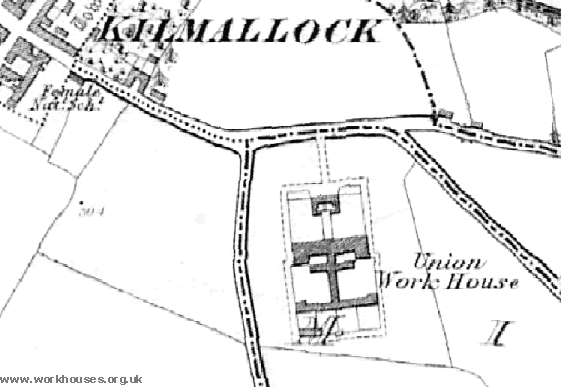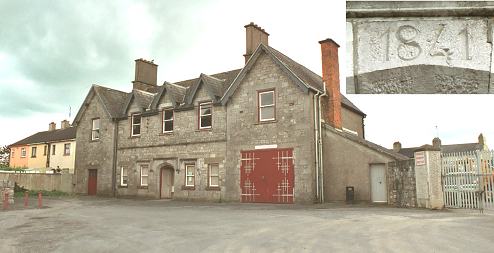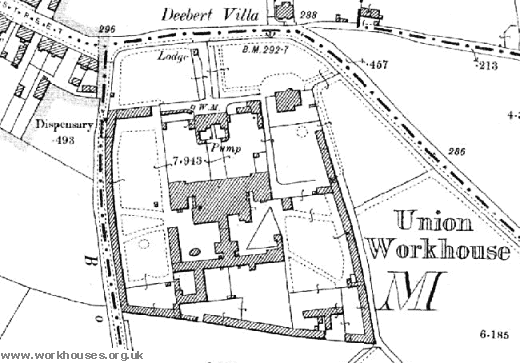Kilmallock, Co. Limerick
Kilmallock Poor Law Union was formally declared on the 9th January 1839 and covered an area of 220 square miles. The Union was originally to be called Bruff Union, but was renamed Killmallock in July 1839. Its operation was overseen by an elected Board of Guardians, 28 in number, representing its 21 electoral divisions as listed below (figures in brackets indicate numbers of Guardians if more than one):
Co. Limerick: Ardpatrick, Ballinlanders, Ballinlough, Ballinvana, Ballyshoneboy, Bruff (3), Bruree (2), Cahercorney, Dromin, Glenroe, Glinbrohane, Gallbally (2), Hospital (2), Kilfinnan (2), Kilflyn, Kilmallock, Knockaney (2), Knocklong, Manisteranenagh, Tankardstown, Uregare.
The Board also included 9 ex-officio Guardians, making a total of 37. The Guardians met each week at 11am on Friday.
On 16th February 1840, the Charleville electoral division was added to the Union. The population falling within the (enlarged) Union at the 1831 census had been 74,776 with divisions ranging in size from Ballymoreen (population 1,237) to Kilmallock itself (10,459).
The new Kilmallock Union workhouse was erected in 1839-40 on a seven-acre site at the south-east of Kilmallock. Designed by the Poor Law Commissioners' architect George Wilkinson, the buildings were planned to accommodate 800 inmates. Its construction cost £7,000 plus £1,212 for fittings etc. The workhouse was declared fit for the reception of paupers on 18th February 1841, and received its first admissions on 29th March. The workhouse location and original layout are shown on the 1840 map below.

Kilmallock workhouse site, 1840
An entrance and administrative block at the north of the site contained a porter's room and waiting room at the centre with the Guardians' board room on the first floor above.

Kilmallock entrance and administrative block from the north-west, 2002
© Peter Higginbotham.
The main accommodation block had the Master's quarters at the centre, with male and female wings to each side. At the rear, a range of single-storey utility rooms such as bakehouse and washhouse connected through to the infirmary and idiots' wards via a central spine containing the chapel and dining-hall.
During the famine in the mid-1840s, sheds were erected to accommodate an additional 200 inmates. A 40-bed fever hospital was subsequently erected. Tha later layout of the site is shown on the 1900 map below.

Kilmallock workhouse site, 1900
In 1920-21, the main part of the workhouse was occupied by military forces. Under the 1923 Local Government (Temporary Provisions) Act, 2. the workhouse was to be closed and "disposed of for National use as factories, mills or other industrial purposes that will create employment."
Most of the former workhouse buildings have been demolished. The entrance block has survived and the is now used as council depot. The right hand wing of the block has been used to house a fire brigade engine.
Records
Note: many repositories impose a closure period of up to 100 years for records identifying individuals. Before travelling a long distance, always check that the records you want to consult will be available.
- Limerick Archives, Lissanalta House, Dooradoyle Road, Limerick.
Bibliography
- Crossman, V (2006) Politics, Pauperism and Power in Late Nineteenth-century Ireland
- Gray, P (2009) The Making of the Irish Poor Law, 1815-43
- O'Connor, J (1995) The Workhouses of Ireland
Links
- None.
Unless otherwise indicated, this page () is copyright Peter Higginbotham. Contents may not be reproduced without permission.


